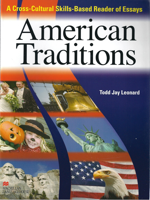WIT Life #323: Japan Week 2018
Written by professional Writer/Interpreter/Translator Stacy Smith (Kumamoto-ken CIR, 2000-03), WIT Life is a periodic series about aspects of Japanese culture such as film, food and language. Stacy starts her day by watching Fujisankei’s newscast in Japanese, and here she shares some interesting tidbits and trends along with her own observations.
 Japan Week 2018 is taking place through the weekend at Grand Central’s Vanderbilt Hall, and this year’s theme is 3D Trick Art. Sponsored by the Japan National Tourism Organization (JNTO), the event strives to create an Instagrammable, interactive experience for visitors. In addition to the regular array of booths from travel agencies, various regions in Japan and Japanese food and drink purveyors, there are several large backdrops into which you can insert yourself for the ultimate selfie. My favorite was the bowl of ramen into which you can become one of the ingredients, and others include becoming a topping for sushi, helping to carry the mikoshi at a matsuri and shuttling around a sumo wrestler in a rickshaw (Fujifilm is even on hand to help you print out these funny shots after you take them!). Read More
Japan Week 2018 is taking place through the weekend at Grand Central’s Vanderbilt Hall, and this year’s theme is 3D Trick Art. Sponsored by the Japan National Tourism Organization (JNTO), the event strives to create an Instagrammable, interactive experience for visitors. In addition to the regular array of booths from travel agencies, various regions in Japan and Japanese food and drink purveyors, there are several large backdrops into which you can insert yourself for the ultimate selfie. My favorite was the bowl of ramen into which you can become one of the ingredients, and others include becoming a topping for sushi, helping to carry the mikoshi at a matsuri and shuttling around a sumo wrestler in a rickshaw (Fujifilm is even on hand to help you print out these funny shots after you take them!). Read More
WIT Life #322: Then They Came for Me
Written by freelance Writer/Interpreter/Translator Stacy Smith (Kumamoto-ken CIR, 2000-03), WIT Life is a periodic series about aspects of Japanese culture such as language, film, business, food and politics. Stacy starts her day by watching Fujisankei’s newscast in Japanese, and here she shares some interesting tidbits and trends along with her own observations.
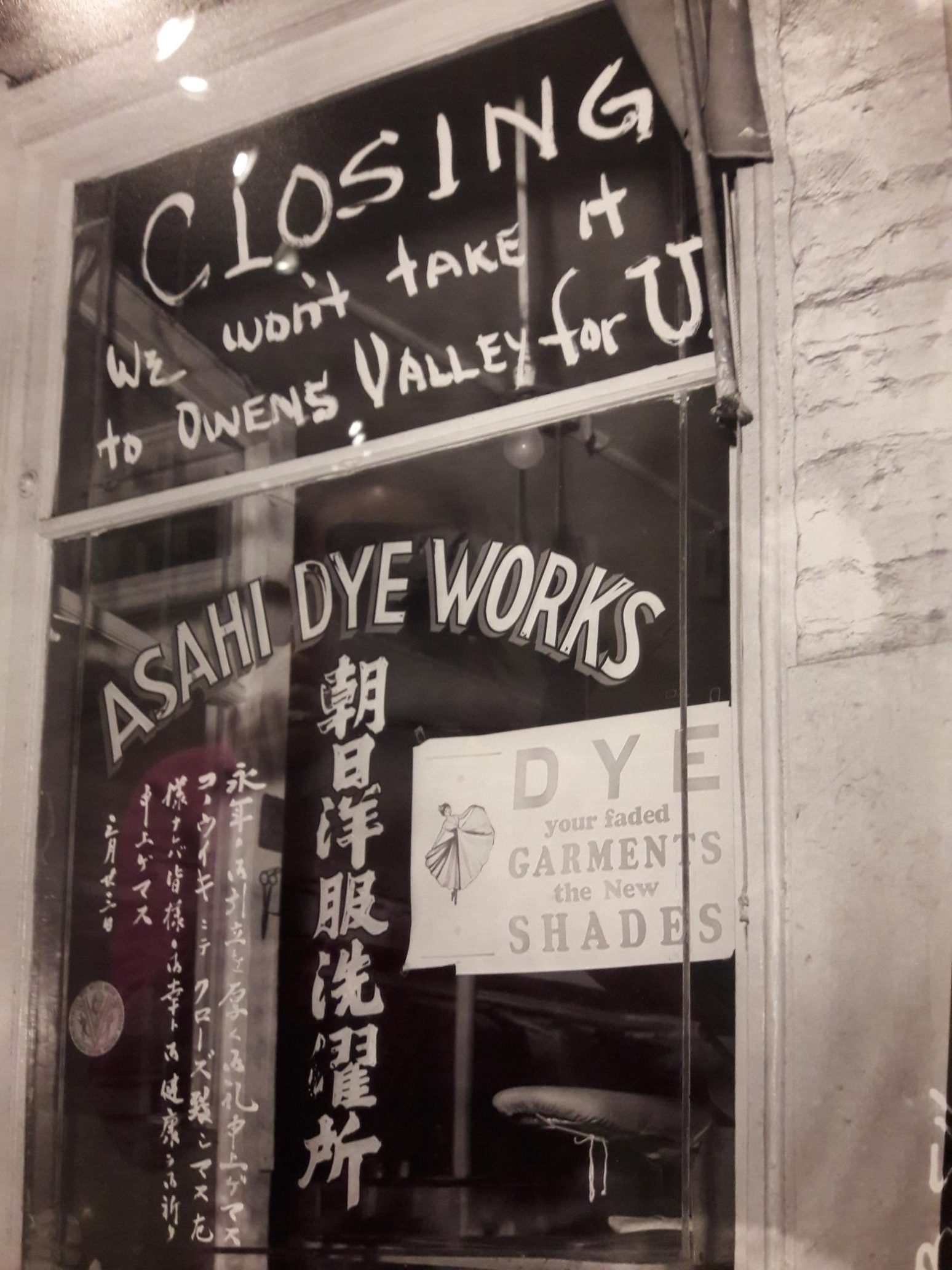
Sign from Japanese-run business telling customers their clothing won’t be brought to the incarceration camp
After interpreting in Manhattan Criminal Court earlier this week, I stopped for lunch in Chinatown and found myself with some time on my hands afterwards. I decided to visit the International Center of Photography and was nicely surprised to find the exhibition Then They Came for Me: Incarceration of Japanese Americans during WWII (through May 6), a comprehensive portrayal of this reprehensible period in American history. It includes works from prominent photographers such as Dorothea Lange and Ansel Adams, letters and other personal mementos, and moving video testimonials from those who were incarcerated or have family members who had been.
From 1942-1946, thousands of Japanese Americans were forcibly relocated to incarceration camps in desert and swamp areas of the Western U.S. The original term for this had been “internment,” but I learned from the exhibition that Japanese American organizations and scholars have developed new terminology in an effort to more accurately reflect the wrongness of what took place. Read More
WIT Life #321: Sato Sakura Gallery
Written by professional Writer/Interpreter/Translator Stacy Smith (Kumamoto-ken CIR, 2000-03), WIT Life is a periodic series about aspects of Japanese culture such as language, film, business, food and politics. Stacy starts her day by watching Fujisankei’s newscast in Japanese, and here she shares some interesting tidbits and trends along with her own observations.
Last September, Chelsea received a great addition to its art scene in the form of the Sato Sakura Gallery. This Japan-born museum has two locations (Fukushima/Tokyo) that specialize in 日本画 (Nihon-ga or traditional Japanese painting). This term and concept was created in response to 西洋画 (Seiyou-ga or Western painting), which made its way to Japan during the Meiji Era (1868). Today the idea of Nihon-ga can refer to both purely traditional Japanese painting, as well as new styles of painting that incorporate Western painting methods while remaining faithful to traditional Japanese painting techniques.
The inaugural exhibit at the new Chelsea location has 桜 (sakura or cherry blossoms) as its theme , and showcases 12 different artists and their works. They range from regular-sized paintings to giant folding screens, and my favorites were from self-proclaimed “flower and cherry blossom maniac” Reiji Hiramatsu. In particular, his work “Playful Carps” piece is impressive. Its bright colors are striking, and I enjoy the playfulness of the fish in a pond with petals filling its surface. I also really like his “Mt. Fuji and Cherry Blossoms,” Read More
, and showcases 12 different artists and their works. They range from regular-sized paintings to giant folding screens, and my favorites were from self-proclaimed “flower and cherry blossom maniac” Reiji Hiramatsu. In particular, his work “Playful Carps” piece is impressive. Its bright colors are striking, and I enjoy the playfulness of the fish in a pond with petals filling its surface. I also really like his “Mt. Fuji and Cherry Blossoms,” Read More
WIT Life #318: Shuji Terayama
Written by professional Writer/Interpreter/Translator Stacy Smith (Kumamoto-ken CIR, 2000-03), WIT Life is a periodic series about aspects of Japanese culture such as film, food and language. Stacy starts her day by watching Fujisankei’s newscast in Japanese, and here she shares some interesting tidbits and trends along with her own observations.
Last week I had the opportunity to see some amazing works from legendary avant garde Japanese poet, dramatist, writer, film director, and photographer Shuji Terayama. I hadn’t heard of him before, but many critics view him as one of the most productive and provocative creative artists to come out of Japan. He has also been cited as an influence on various Japanese filmmakers from the 1970s onward. The three films screened were Americans, who are you (アメリカ人あなたは), Laura (ローラ) and The Trial (審判).
A special treat was that Laura included the restaging of Terayama’s 1974 film performance with the original actor, Henrikku Morisaki, who was in attendance. This short film feature female strippers who are berating the audience, when all of a sudden a spectator (Morisaki) enters the film. We saw scenes of him as a young man in this role, being stripped and assaulted by the women. At the end of the film he emerged from behind the screen, this time naked and holding his torn clothes. In an interview post-screening, Morisaki told stories about his work with Terayama over the course of almost 17 years. He described Read More
WIT Life #316: Frank Lloyd Wright’s Teikoku Hotel
Written by professional Writer/Interpreter/Translator Stacy Smith (Kumamoto-ken CIR, 2000-03), WIT Life is a periodic series about aspects of Japanese culture such as film, food and language. Stacy starts her day by watching Fujisankei’s newscast in Japanese, and here she shares some interesting tidbits and trends along with her own observations.
This year marks the 150th anniversary of Frank Lloyd Wright’s birth, and celebrations are taking place around the country and world. I recently had the chance to go to MoMA’s Frank Lloyd Wright at 150: Unpacking the Archive (ending October 1 so run to check it out if you haven’t already!). This incredibly comprehensive exhibit looks at Wright’s career from 12 different perspectives, each of which has its own section. There are around 450 works that he made from the 1890s through the 1950s on display, and each section has a video narrated by a scholar in the respective field.
I was particular interested in the section discussing the second version of the Imperial Hotel (帝国ホテル), designed by Wright and built from 1919–1923). It survived the Great Tokyo Earthquake that September, but eventually slipped into decay over time and in 1967 it was decided to demolish the hotel and replace it with a high-rise building. The structure was mostly destroyed, but the iconic central lobby wing and reflecting pool were disassembled and rebuilt at Meiji-mura in Nagoya, which I was lucky enough to visit during a recent business trip.
This is an amazing theme park with a variety of architecture mostly from the Meiji Era (1868-1912), and Read More
2017 Japan Writers Conference coming up
Posted by Tom Baker (Chiba, 1989-91).
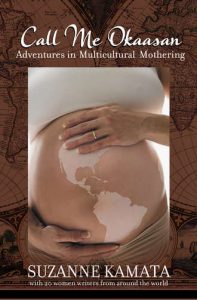 The Japan Writers Conference is a free annual event for English-language writers, held in a different part of Japan each year. In 2017, it will take place in Tokyo at the Ekoda Campus of Nihon University College of Art on Oct. 8-9, the last two days of a Japanese holiday weekend.
The Japan Writers Conference is a free annual event for English-language writers, held in a different part of Japan each year. In 2017, it will take place in Tokyo at the Ekoda Campus of Nihon University College of Art on Oct. 8-9, the last two days of a Japanese holiday weekend.
There will be will be about 30 presentations by published writers of fiction, poetry, memoir, travel writing and more. Several of those writers are former JETs.
JET alumnae Susan Laura Sullivan and Suzanne Kamata, for example, will give a joint presentation on editing anthologies. Sullivan is the editor of the forthcoming anthology “Women of a Certain Age,” while Kamata’s published anthologies include “Call Me Okaa-san” and “The Broken Bridge.”
Kamata will also give a presentation together with Ann Tashi Slater on creative nonfiction.
JET alum and textbook author Todd Jay Leonard, whose many titles include “American Traditions,” will give a lecture on “The Ever-Changing Publishing Industry,” in which he will discuss traditional versus print-on-demand publishing, followed by a Q&A session.
Poet and novelist Holly Thompson, who first came to Japan in connection with the pre-JET MEF program, will present “Writing Picture Books: Nonfiction Opportunities.” Her published works include “The Wakame Gatherers.”
 For details on those and the other presentations, visit www.japanwritersconference.org or follow @JapanWritersCon on Twitter.
For details on those and the other presentations, visit www.japanwritersconference.org or follow @JapanWritersCon on Twitter.
The Japan Writers Conference, now in its 11th year, is completely volunteer-run, and admission is free.
WIT Life #315: Kew Gardens Festival of Cinema
Written by professional Writer/Interpreter/Translator Stacy Smith (Kumamoto-ken CIR, 2000-03), WIT Life is a periodic series about aspects of Japanese culture such as film, food and language. Stacy starts her day by watching Fujisankei’s newscast in Japanese, and here she shares some interesting tidbits and trends along with her own observations.
Last week the inaugural Kew Gardens Festival of Cinema began, and I’ve had the chance to catch a lot of great films at the two main venues of Kew Gardens Cinema and Queens Museum. Today they screened Persona Non Grata (杉原千畝 スギハラチウネ, 2015), a film about Japanese diplomat Chiune Sugihara (“Japanese Schindler”) who served as a consul in Lithuania from 1939-40 and saved the lives of thousands of Jewish refugees by issuing over 2000 transit visas to Japan. He famously continuing to sign visas even as his train pulled away from the station, and is estimated to have saved over 6,000 lives from the Nazis who invaded Lithuania in 1941. However, his diplomatic career was ruined because he had defied instructions from the Ministry of Foreign Affairs not to issue the visas. Sugihara didn’t know if they had made any difference until being found years later by someone he had helped. He is now considered a hero in Japan, and those he saved have more than 40,000 descendants.
The film stars the phenomenal Toshiaki Karasawa as Sugihara and the always stellar Read More
WIT Life #314: New York Asian Film Festival (NYAFF) 2017
Written by professional Writer/Interpreter/Translator Stacy Smith (Kumamoto-ken CIR, 2000-03), WIT Life is a periodic series about aspects of Japanese culture such as film, food and language. Stacy starts her day by watching Fujisankei’s newscast in Japanese, and here she shares some interesting tidbits and trends along with her own observations.
This weekend concludes the 2017 New York Asian Film Festival (NYAFF), which offered another amazing lineup of films and special guests. This is the 16th year of its running, and it just seems to get better over time. I saw two of the Japanese films screened at Lincoln Center’s Walter Reade Theater, the festival’s venue, and another two I had seen on the plane during a recent business trip to Japan (In this same venue the week before the event I had the chance to see Harmonium (淵に立つ), which was not part of the festival but is another thought-provoking and upsetting Japanese film).
The two film s I saw at the festival were Rage (怒り) and Double Life (二重生活). Rage stayed with me for a while after watching it; it is not a film you can easily shake. It is based on the mystery novel of the same name by Shuichi Yoshida, who also wrote Villain and Parade which were both made into fantastic films (the former directed by Sang-il Lee, who made Rage). The story begins with the heinous murder of a couple in their home, with the young, male killer on the loose.
s I saw at the festival were Rage (怒り) and Double Life (二重生活). Rage stayed with me for a while after watching it; it is not a film you can easily shake. It is based on the mystery novel of the same name by Shuichi Yoshida, who also wrote Villain and Parade which were both made into fantastic films (the former directed by Sang-il Lee, who made Rage). The story begins with the heinous murder of a couple in their home, with the young, male killer on the loose.
Characters from communities in three different parts of Japan (Chiba, Tokyo and Okinawa) are shaken by the appearance of three respective young men who fit the description of the wanted man. As the manhunt unfolds, the more we find out about each suspect the more the suspense builds. I was on the edge of my seat for the majority of the film, but once this fear dissipated the psychological terror of the Read More
WIT Life #313: NY Japan CineFest 2017
WIT Life is a periodic series written by professional Writer/Interpreter/Translator Stacy Smith (Kumamoto-ken CIR, 2000-03). She starts her day by watching Fujisankei’s newscast in Japanese, and here she shares some of the interesting tidbits and trends along with her own observations.
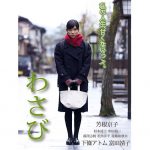 Last night I attended the first night of the 6th annual NY Japan CineFest 2017 at Asia Society. This is one of my favorite cinematic events in the city, as it is a compilation of Japan-related short films. As usual, there were many thought-provoking selections ranging from documentary to futuristic to artistic.
Last night I attended the first night of the 6th annual NY Japan CineFest 2017 at Asia Society. This is one of my favorite cinematic events in the city, as it is a compilation of Japan-related short films. As usual, there were many thought-provoking selections ranging from documentary to futuristic to artistic.
My favorite was Wasabi from director Bunji Sotoyama, which stars Kyoko Yoshine who you might recognize as the main character from the recently ended NHK morning drama Beppin-san. In this film, she plays high school student Aoi who lives with her depressed father who is no longer able to maintain his sushi shop. She is Read More
Posted by Tom Baker (Chiba, 1989-91), a writer and editor in Tokyo and a regular Japan Writers Conference participant.
The Japan Writers Conference is a free annual event for English-language writers in a variety of fields. It always includes a fair number of JETs and JET alumni. In 2017, it will be held in Tokyo at Nihon University College of Art, October 8 and 9.
The organizers are looking for writers, translators, editors, agents and publishers to give presentations. If you are in any of those categories, they would love to hear from you. Below is the official call for presentation proposals.
:::::::::::::::::::::::::::::::
All published writers, translators, editors, agents and publishers who would like to lead a session are welcome to submit proposals. We especially encourage proposals from new submitters. One of the strengths of the Conference has been variety, and the best way to foster variety is to have new presenters each year.
Those who have presented at past conferences are (of course) welcome to submit new proposals. But please, in the words of Ezra Pound, “Make it new.”
Please forward this to any friend or colleague who might be interested. If you know someone the conference organizers might approach–either living in Japan or planning to visit Japan next autumn–send us your suggestion. If you have contact information, that would be a great help.
Detailed information follows, but briefly, a proposal needs to include a brief bio, including some publication credits, the type of presentation you wish to make, a title, a summary of 50 words, a longer abstract (150 words) and any special requests you might have. Standard sessions are fifty minutes long, but if you have something special in mind, please let us know and we will accommodate if possible.
Presentations on all genres and all aspects of writing and publishing are welcome. The deadline for presentation proposals is Thursday, June 1, 2017.
As in the past, the Conference will be free and open to all who wish to attend. This is possible because all the presenters and organizing staff volunteer their time and talent, and the use of the site is donated by the host. As a result, the Conference cannot offer any payment, reimbursement, lodging, or help in securing visas or travel permits. So please don’t ask.
Proposal Guidelines
When planning your JWC proposal, keep your audience in mind. Your listeners will be writers and others (translators, editors, publishers, and agents) concerned with creating publishable writing. While teaching, literary studies and private self-expression are certainly worthy activities, they are not the focus of this Conference. Ask yourself as a writer or other word professional these questions:
What information do I have which could be useful to others?
What writing, rewriting, editing, or marketing techniques have worked for me or others I know?
What topic would make for a lively and enlightening discussion?
What publishing or other professional opportunities do I know about?
What will an attendee take away from my fifty-minute session that he or she will find worthwhile?
You may submit more than one proposal.
The only qualification one needs to be a presenter is to have published. This does not mean that you need to have published a lot or in some high-profile journal. Your book (if you have a book) does not have to be on a best seller list. You do not have to have won any awards or to have appeared on TV. You simply need to have written, edited, translated, or otherwise worked on a piece of writing which has made it to the public eye. That is, published.
Proposal Deadline and Format
Using the following format, please send your ideas for a presentation by June 1, 2017. Send your proposal in the body of an email (no attachments) to both these addresses:
gribblej@gol.com
bernmulvey_1@yahoo.co.jp
In your subject line give your name, “JWC,” and the date.
In the body of the email, give:
1. Your name (or names)
2. Contact information (email, telephone. These remain confidential.)
3. Your publications (Need not be complete, but give names of journals and genre for short pieces; title, publisher and date for books; venues and dates for plays, and so on)
4. Title of presentation. (20 words or less)
5. Type of presentation (short lecture with Q&A, craft workshop, panel discussion, reading with Q&A, etc.)
6. Short summary of the presentation (50 words or less)
7. Abstract of the presentation (150 words or less)
8. Personal and professional biography (50 words or less. Make mention of your publications, as this will be part of the Conference program)
9. Anything else, such as special equipment needs or questions.
Your proposal doesn’t have to be a “finished” document to submit. There will be time to shape and polish your ideas for a presentation. But there is a set number of session slots available and if you are interested in having one of them, please let us know soon. Again, the deadline is June 1, 2017.
John Gribble
Bern Mulvey
Co Co-ordinators,
2017 Japan Writers Conference
WIT Life #312: The Departure
WIT Life is a periodic series written by professional Writer/Interpreter/Translator Stacy Smith (Kumamoto-ken CIR, 2000-03). She starts her day by watching Fujisankei’s newscast in Japanese, and here she shares some of the interesting tidbits and trends along with her own observations.
Last month’s Tribeca Film Festival featured the world premiere of the documentary The Departure directed by Lana Wilson. It profiles Ittetsu Nemoto, a Buddhist priest whose lifework is suicide prevention. In the group sessions he holds at his temple, he introduces exercises that attempt to show attendees what ending their lives would really mean in terms of loss and even simulates the experience of dying. Many participants come away with a renewed lease on life, and for those who don’t Nemoto makes himself available to them day and night whenever they need someone to talk to.
However, Nemoto’s devoted around-the-clock counseling takes its toll on him, both Read More
WIT Life #311: Premium Friday
WIT Life is a periodic series written by professional Writer/Interpreter/Translator Stacy Smith (Kumamoto-ken CIR, 2000-03). She starts her day by watching Fujisankei’s newscast in Japanese, and here she shares some of the interesting tidbits and trends along with her own observations.
A little over a month ago Japan began a new public-private initiative c alled Premium Friday (aka プレミアムフライデー or プレ金) as part of ongoing labor reform efforts from the government. This monthly event will take place on the last Friday of each month, and its official launch was on February 24th. The idea for Premium Friday was conceived by the Japan Business Federation, and the concept is that employers let their employees leave at 3 p.m. on the final Friday of the month. This is not just an altruistic move the Federation is making on behalf of workers; the goal is to have shorter hours boost productivity and encourage consumer spending. It is also a response to the suicide of a 24-year old employee at Japan’s largest advertisement agency Dentsu in December of 2015, which authorities ruled was a result of overwork.
alled Premium Friday (aka プレミアムフライデー or プレ金) as part of ongoing labor reform efforts from the government. This monthly event will take place on the last Friday of each month, and its official launch was on February 24th. The idea for Premium Friday was conceived by the Japan Business Federation, and the concept is that employers let their employees leave at 3 p.m. on the final Friday of the month. This is not just an altruistic move the Federation is making on behalf of workers; the goal is to have shorter hours boost productivity and encourage consumer spending. It is also a response to the suicide of a 24-year old employee at Japan’s largest advertisement agency Dentsu in December of 2015, which authorities ruled was a result of overwork.
At the start there were 130 companies that actually implemented Premium Friday, and 4000 have applied for the official logo (pictured above). Of those already on board the majority are larger companies, and only 3.7 percent of Tokyo area employees took part in the inaugural event. Statistics for the second Premium Friday which took place today have not been released yet, but considering that March 31 is the end of Japan’s fiscal year and one of its busiest days overall, it it likely that participation was not stellar. For those who took part last month, some of the activities people engaged in were Read More
Hey JET alum parents! Discover Canada with your kids!
Jody Robbins, a Tottori ALT from 1994-1997, has just written her first book! Published in May, 2016. 25 Places in Canada Every Family Should Visit is the ultimate guide to family travel in the Great White North. This year Canada celebrates its 150th year. From coast to coast, north to south, the country will be aflutter with events and celebrations, making 2017 the best time to discover Canada with your family.
Families have different travel needs, and Robbins gives the scoop on affordable hotels, worth-it attractions and nature hideaways, in addition to piquing the interest of young travellers with quirky, kid-friendly facts. Catering to families such as her own, she’s pulled together 25 of Canada’s best family-friendly destinations and compiled in-depth profiles for each, providing more than a few ideas to keep even the most active of families busy.
She also offers loads of how-to advice to make family travel a more pleasant experience. Robbins reveals how creativity and managing expectations go a long way to rekindling romance, offers practical advice on how to see the world for less and dishes on how to survive long road trips.
You can support this alumnus by ordering her book online (it makes a great gift!) or sharing the word with your friends.
And please visit Jody’s blog Travels with Baggage for lifestyle tips and inspiration.
St. John’s Legal English: Comprehensible input for legal English students
Steven Horowitz (Aichi-ken, 1992-94) is Director of Legal English at St. John’s University School of Law in Queens, NY and publisher of the St. John’s Legal English blog. He will be attending the upcoming TESOL International Conference in Seattle and will be on a panel titled “Legal Language: Strategies for Effective Communication in Law School” scheduled for March 23.
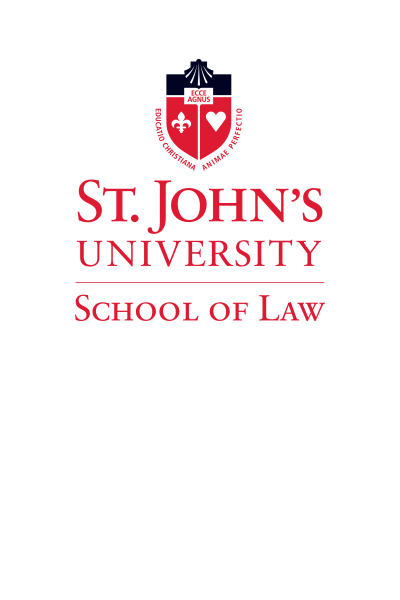 Comprehensible input for legal English students: Resources, approaches & ideas
Comprehensible input for legal English students: Resources, approaches & ideas
International students in LLM and legal English programs at US law schools come to study law, not ESL. At the same time, law study requires deep engagement with texts and concepts that are complex and challenging even for native English speakers. But how do you have substantive class discussions or evaluate students’ legal writing when students are struggling to sufficiently comprehend the language of the reading?
In linguistics, the relevant term is “comprehensible input.”
Click here to read the full blog post on the St. John’s Legal English blog.
WIT Life #310: The Beauty of Washi
WIT Life is a periodic series written by professional Writer/Interpreter/Translator Stacy Smith (Kumamoto-ken CIR, 2000-03). She starts her day by watching Fujisankei’s newscast in Japanese, and here she shares some of the interesting tidbits and trends along with her own observations.

One of Suzuki Sensei’s amazing works: 以花為師 (“Life lessons from flowers”). It reads from right to left, but is slightly cut off at start.
This weekend I had a chance to sit in on a culture class at the Nippon Club for the purpose of writing an article in Chopsticks. We were studying calligraphy, but specifically practicing this art on 和紙 (washi or Japanese paper). Sensei Mori Suzuki was visiting from Japan just for this class, and in addition to guest teaching we got to enjoy an exhibition of his work and other washi delights in the 7th floor gallery. Entitled 「和紙・伝統と創造」 (Washi: Dentou and Souzou or “Washi Paper: Cultural Heritage and Artistic Creativity”), this exhibit introduces the history of traditional handmade washi, the aesthetic beauty of 切金(kirikane or metallic foil cut into strips or other shapes to form decorative motifs) through the subtle light reflected from foil, origami artwork, modern washi sculptures, and Suzuki Sensei’s calligraphy creations on handmade washi. It runs through February 24 with free admission, and the gallery is open every day but Sunday so make sure to check it out before it closes !
!

